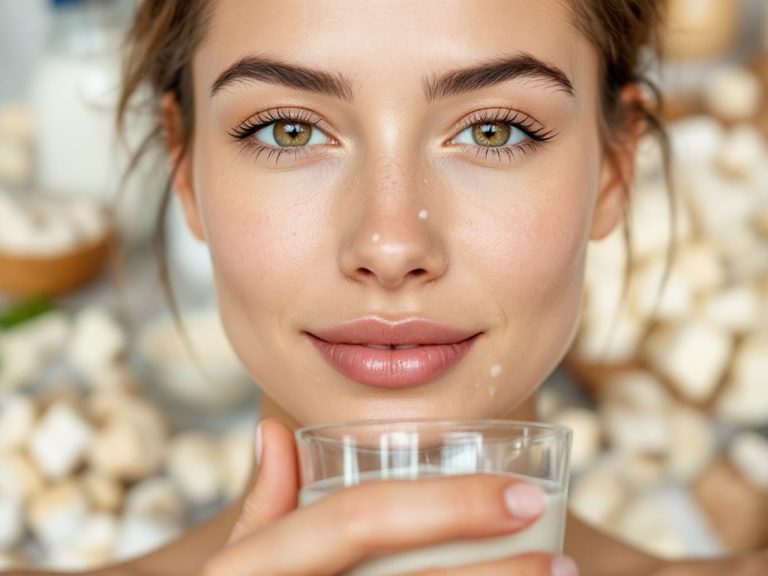Hey there, skincare enthusiast! Ever looked at your bathroom shelf full of serums, creams, and concoctions and thought, “Am I actually using these right?” Trust me, I’ve been there. Right up close and personal with all those bottles and tubes, trying to decode the mysteries of product reactions. It’s like a puzzle you never knew you signed up for, right? Let’s dive into this product reaction guide and figure out what’s going on with some of those sneaky skincare effects you keep noticing.
Table of Contents
ToggleSo, What’s the Big Deal with Product Reactions?
If you’ve ever wondered why that new miracle serum made your skin freak out rather than look fabulous, you’re definitely not alone. This often happens because our skin can be way more sensitive than we give it credit for, and sometimes the fun new product isn’t quite what it was cracked up to be for your face. Product reactions happen for a bunch of reasons—the main culprits are often specific ingredients and how they interact with your skin’s existing setup (which is so way more complex than just “oily” or “dry”).
Ingredient Impact: What’s in Your Bottle?
Before diving deeper, let’s chat about the heroes and villains lurking in your skincare stash—the ingredients. You know how they say the devil’s in the details? In skincare, it often is. Some ingredients work wonders, while others… not so much.
- The Power Players:
- _Hyaluronic Acid:_ Hydration wonderworker.
- _Niacinamide:_ Brightening champ.
- _Vitamin C:_ Antioxidant powerhouse.
- Potential Troublemakers:
- _Fragrance:_ Smells nice, but could bug sensitive skin.
- _Alcohol:_ Great for drying—sometimes too great.
- _Sulfates:_ Perfect in small doses, harsh if overdone.
Each of these plays its part, either harmonizing with your skin or, unfortunately, playing the villain. Finding out which is which is key, and we’ll get to how you can experiment safely.
Starting Off: Go Slow for Skin’s Sake
Now, I get it. You’re excited about that new Vitamin C serum everyone’s raving about, but before slathering it all over your face, let’s take this one step at a time.

- Patch Test: Seriously, don’t skip this. Dab a little product on your inner arm or behind your ear. Wait 24 hours and see what happens.
- Introduce Gradually: Think day-at-a-time, not five-course product feast. Even if you’re super eager, maybe start a couple of times a week, then gradually build up.
- Observation Days: Dedicate a few days just to see how your skin is reacting, without tossing other new elements into the mix. It’s like trying one new food at dinner instead of an entire mystery buffet.
Identifying the Signs: Skincare Effects and What They Mean
Have you ever thought about what a fresh complexion truly looks like? Sometimes, subtle skincare effects are easy to overlook unless you know what you’re watching for.
Friendly Reactions: All Good Things
- Glowing: Skin should look hydrated and alive—like you’ve had eight glasses of water and a full night’s sleep.
- Smoothing: Thumbs up for product repertoires that make textures even.
- No Red Overreaction: Skin’s doing great if it’s calm and not produce red flags.
It’s typically these positive effects that tell you, “You’re on the right track!”
Not-So-Friendly Reactions: Time to Rethink
- Redness/Irritation: Stop! Product ain’t it if your face turns lobster red.
- Breakouts/Pimples: Sometimes it means purging (more on this hopeful happening soon), but often it means “halt, no further!”
- Increased Dryness: Congrats, you found the Sahara Desert’s cousin—your face.
These not-so-welcome reactions often suggest you’re playing with something that’s just not suited to your skin.

When Product Reactions Go Astray: Adjusting Your Game Plan
Alright, sometimes even when we take it slow, things go haywire. Let’s detangle the factors and set things right.
Problem-Solving: Common Mistakes to Avoid
- Overdosing on Actives: Every too much of a good thing? Your skin’s probably shouting it! Too many active ingredients at once are often overkill.
- Ignoring Moisturization: Seriously, don’t skip it. Even if you’re oily, there’s a difference between hydrated and plain greasy.
- Switching Skincare Too Often: Let’s face it, skincare’s not speed dating. Give products the time they need (think 4-6 weeks, not days).
Reset and Realign
If things go awry, don’t panic. Here’s your step-be-step to get back on track:
- Stop New Products: Go back to what you know works.
- Dial Down Actives: Use gentle cleansers and basic moisturizers.
- Hydrate Awake: Make sure you’re really hydrating, both topically and for real.
Tracking Progress: A Skin Diary

Ever thought of keeping a skin journal? Sounds nerdy but bear with me. Jot down what you notice each day when you introduce new stuff. A couple of lines about your daily routine and how your skin feels can help you catch patterns in how your skin’s reacting to products. Plus, gives you somewhere to brag when you find that *just right* routine.
Long-Term Learning: Getting to Know Your Skin
Yep, it takes time, but the long stretch totally pays off. Keep tuning in to all those tiny things—every texture change and twinge. It’s like learning a new language—but worth every bit.
Reasonable Expectations: The Wait for That Glow
In case no one’s told you recently, not every lotion or potion is instant magic. Sometimes, expecting skin nirvana in a day or two sets you up for frustration. Remember, patience equals progress. Let’s face it, it’s called a routine for a reason.
Friends and Foes: Knowing the Ingredients Better
Download an ingredients checklist app or spend some quality Google time reading up. Ingredients have trends, just like fashion, and knowing the INCI list lingo bridges fantasy with reality. Who knew skincare geeks would be so in vogue?
Wrapping It Up: Strengthen Your Skincare Savvy
Understanding skin (and figuring out its finicky relationship with products) takes time, a good sense of humor, and a bit of bold experimenting. In this product reaction guide, we traveled from the simplest first step to understanding complex skincare effects and ingredient impact. With a journal in hand, you’re better equipped to troubleshoot product reaction puzzles like a pro.
So go on and give it a go! Step closer to decoding what seems complex and claim your brighter, happier skin adventures. I’m betting that your long-term wins with skincare will outshine every short-lived blip. After all, there’s no one-size-fits-all in skincare, but that’s what makes it worth all the fun trying—you can eventually find exactly what lights you up! Here’s to hoping you and your jar of moisturizer become the best of friends.
Alright, cheers to happy, healthy skin—and way more skincare talks over coffee!
Frequently Asked Questions
What are the key components of a chemical reaction in a product reaction guide?
A chemical reaction in a product reaction guide typically includes reactants, products, and the reaction arrow. Reactants are the starting materials written on the left side of the arrow, while products are the resulting substances written on the right side[2][3][5).
How do you identify reactants and products in a chemical reaction?
Reactants are identified by their position on the left side of the chemical reaction arrow, while products are on the right side. For example, in the reaction Na + Cl → NaCl, sodium (Na) and chlorine (Cl) are the reactants, and sodium chloride (NaCl) is the product[2][3][5).
What are some common types of chemical reactions included in a product reaction guide?
A product reaction guide often includes various types of chemical reactions such as acid-base reactions, oxidation-reduction (redox) reactions, synthesis reactions, single and double replacement reactions, and combustion reactions. Each type has specific characteristics and rules for predicting the products[3][4][5).
How do you predict the products of a chemical reaction?
Predicting the products of a chemical reaction involves understanding the type of reaction and applying specific rules. For example, in combustion reactions, the products are typically CO2 and H2O. In replacement reactions, the reactivity series is used to determine if a metal or non-metal can replace another element in a compound[5]).
References







